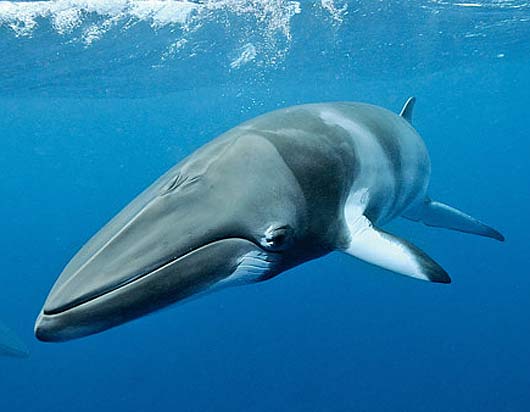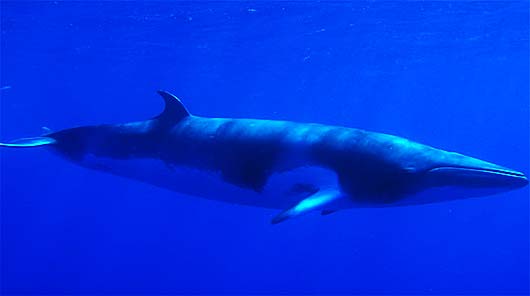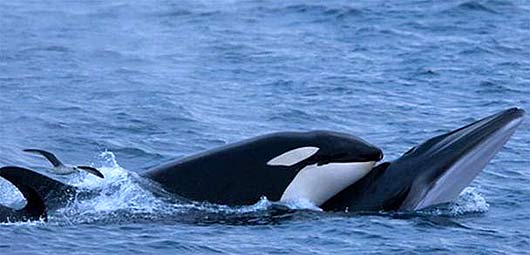Minke Whale – Curious, Smallest of Rorquals

Long ago, a Norwegian whaler named Meincke harpooned one of these whales, thinking that he was hunting a blue whale. His companions were so amused at his error they began calling the whale “Meincke’s whale”. That name has proved to be a bit complicated for english speakers so it has been simplified as “minke”. This smallest of the rorquals (a group within the baleen whales, which includes the blue whales (so Meincke’s mistake was a reasonable mistake)), distinguished by a white band on each flipper, is fairly common in coastal waters. There are two species of the whale with one being called the Northern (or Common) and the other being the Southern (or Anarctic).

Along the Pacific coast of North America, the whale is found from the Chukchi Sea south to northern Baja California during the summer and from central California south to central Mexico during the winter. Current estimates put its population numbers at about 500,000. Along the Atlantic coast, its range is from Baffin Bay south to Chesapeake Bay during the summer, and from the eastern Gulf of Mexico and northeastern Florida to Puerto Rico and the Virgin Islands during winter. It is most often seen alone or in groups of two or three.

The minke whale feeds mainly on small shoal fish and krill. In the Antarctic it has reached a length of 36 ft (11 m) but the average is around 24 ft. It weighs as much as 9.8 tons. North American minke whales are a little smaller and specimens have measured 33 ft at the largest. The newborn calf is about 8.5 feet (2.6 m) long. Minkes are more likely to be seen at close range than others of the rorqual family, for they appear to be curious about boats and may swim close to an anchored or slowly moving vessel. In 1957 a party of British explorers traveling on the sea ice off Antarctica came upon several pools in the ice through which minke, killer, and beaked whales were rising at intervals to breathe. The whales had been trapped by the sudden freezing of a shallow harbor entrance. Since the whales were forced to surface at the breathing holes, the men were able to wait there and pat the whales on their noses as they came up to breath. Luckily for those whales, the days of whale hunting were mostly over at that time. Natives of the Aleutian Islands used to kill minke whales with stone-tipped harpoons dipped in the juice of a poisonous plant called monkshood. During the Middle Ages, Norwegian hunters killed minke whales with “death arrows” dipped in fluid from a rotten whale. After several days, the victim weakened and could be harpooned. Strangely, its flesh was eaten without ill effects. Japanese whalers have still been hunting the whales but have been ordered to stop by the United Nations in 2014. Other predators include orca!

